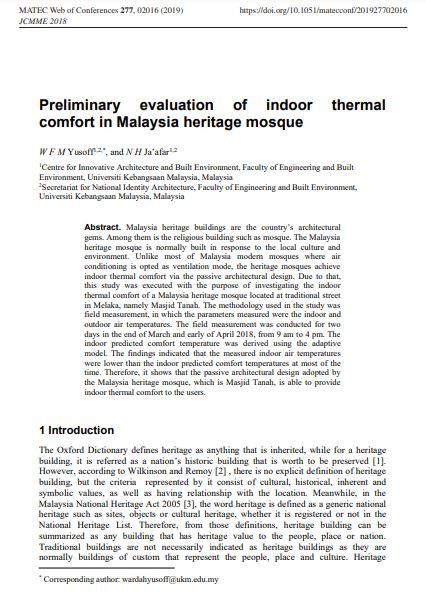
Malaysia heritage buildings are the country’s architectural gems. Among them is the religious building such as mosque. The Malaysia heritage mosque is normally built in response to the local culture and environment. Unlike most of Malaysia modern mosques where air conditioning is opted as ventilation mode, the heritage mosques achieve indoor thermal comfort via the passive architectural design. Due to that, this study was executed with the purpose of investigating the indoor thermal comfort of a Malaysia heritage mosque located at traditional street in Melaka, namely Masjid Tanah. The methodology used in the study was field measurement, in which the parameters measured were the indoor and outdoor air temperatures. The field measurement was conducted for two days in the end of March and early of April 2018, from 9 am to 4 pm. The indoor predicted comfort temperature was derived using the adaptive model. The findings indicated that the measured indoor air temperatures were lower than the indoor predicted comfort temperatures at most of the time. Therefore, it shows that the passive architectural design adopted by the Malaysia heritage mosque, which is Masjid Tanah, is able to provide indoor thermal comfort to the users.
I agree to the terms outlined below:
You agree to upload and assign Mosqpedia Database the rights to use the content worldwide and in perpetuity across all current and future media platforms. Mosqpedia Database may edit, copy, adapt and translate your contribution.
The content will be distributed under the Creative Commons Attribution-Deed – Attribution-NonCommercial-NoDerivatives 4.0 International – Creative Commons
All data will be stored in line with data protection regulations.